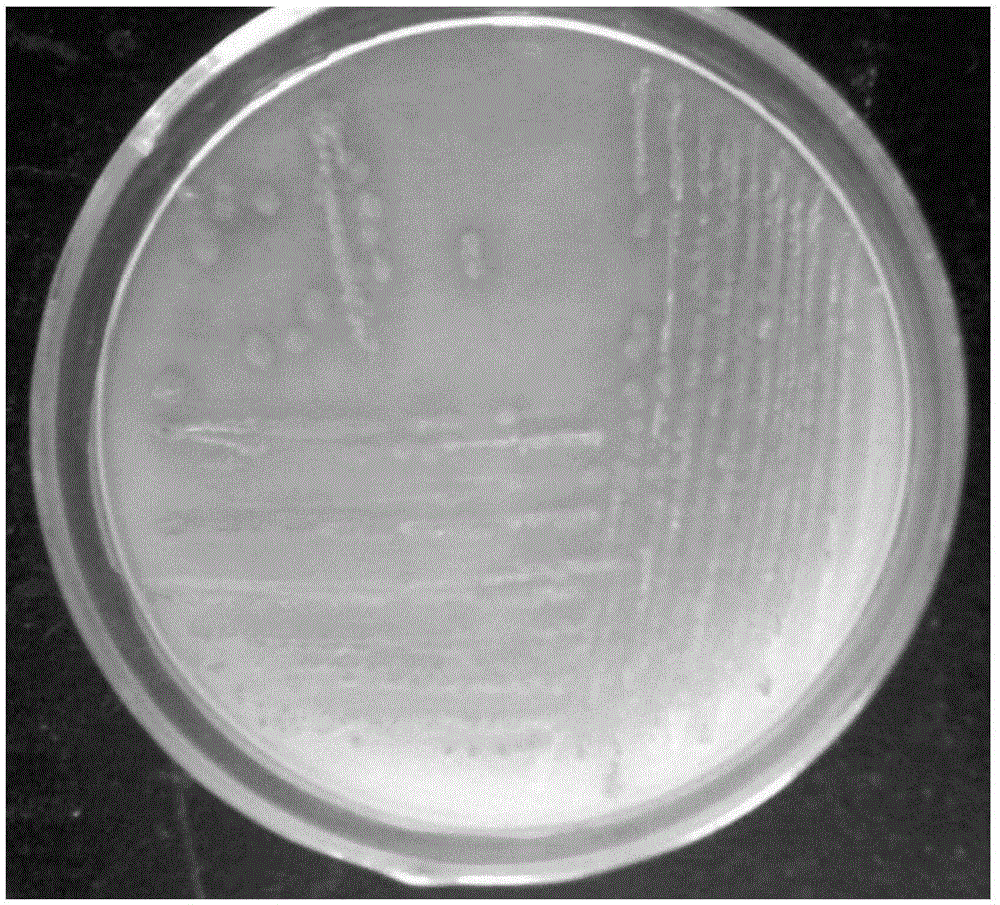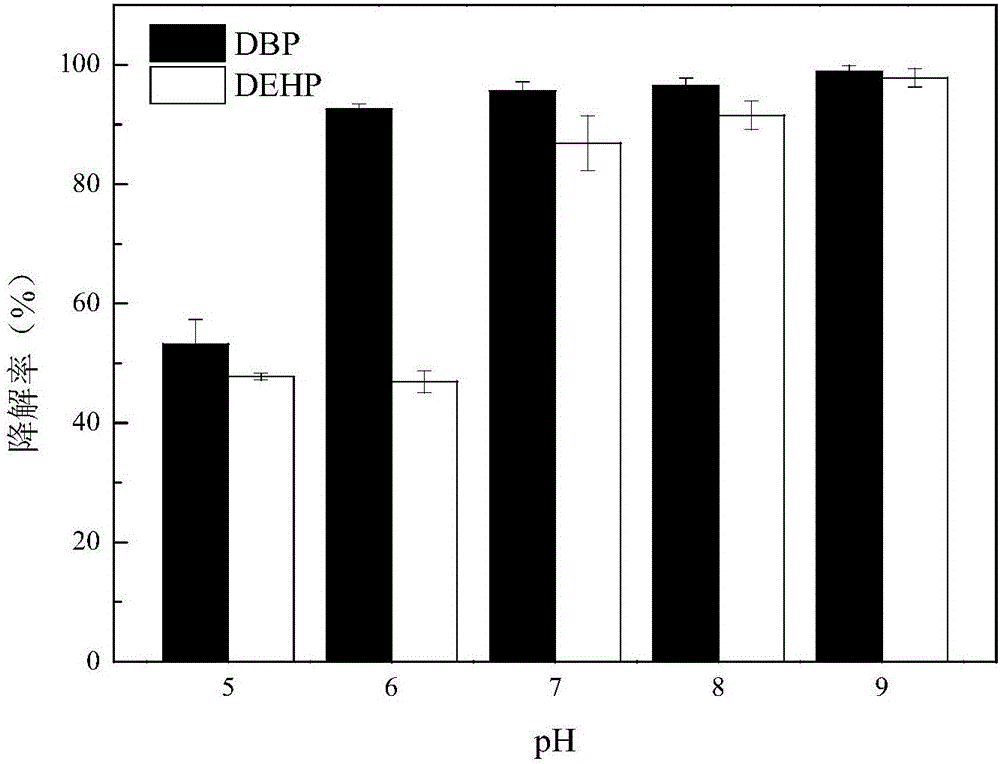Pseudomonas putida RXX-01 and application of pseudomonas putida in degradation of phthalate of soil
A technology of Pseudomonas putida and phthalates, applied in the restoration of polluted soil, bacteria, microorganism-based methods, etc., can solve problems such as phthalate contamination, and achieve wide application prospects , the effect of efficient degradation effect
- Summary
- Abstract
- Description
- Claims
- Application Information
AI Technical Summary
Problems solved by technology
Method used
Image
Examples
Embodiment 1
[0027] Example 1 Screening and Identification of Phthalate Degrading Bacteria
[0028] (1) Screening of phthalate-degrading bacteria
[0029] A certain amount of soil samples were collected in vegetable greenhouses in the suburbs of Qingdao, 10g of fresh soil samples were accurately weighed, added to a conical flask filled with 90mL of distilled water and 10mL of glass beads, placed in a shaker at 30°C, 175rpm and oscillated to mix evenly. Set aside.
[0030] Take 1mL from the above mixed solution according to the inoculum size of 1%, add it to 100mL inorganic salt culture solution with an initial concentration of 100mg / L phthalate (both DBP and DEHP are 50mg / L), and place it on a shaker Shaking culture was carried out at 30°C and 175rpm in the dark for 7 days. Gradually increase the concentration of phthalates (including 200mg / L, 500mg / L, 800mg / L, 1000mg / L, 1500mg / L and 2000mg / L) for each transfer, transfer once every seven days as an acclimation cycle, After a total of 6 ...
Embodiment 2
[0035] Example 2 Detection of Pseudomonas putida RXX-01's ability to degrade phthalates
[0036]Preparation of bacterial suspension: Pick smooth and complete colonies of Pseudomonas putida RXX-01, inoculate them into beef extract peptone liquid medium, and culture them in a shaking table at 28°C and 170r / min for 24 hours. After taking out the beef extract peptone liquid medium, put the culture medium in a sterilized centrifuge tube, and centrifuge at 4000r / min for 10min at room temperature to collect wet bacteria. Then wash three times with sterile physiological saline (0.9% NaCl solution). Finally, the bacterium was formulated into a bacterium suspension with physiological saline, so that the absorbance value OD=1 under the condition of wavelength λ=600nm.
[0037] Determination of residual amount of DBP / DEHP in DBP / DEHP inorganic salt medium: Add 30ml of ethyl acetate to 100ml of DBP / DEHP inorganic salt medium, shake for 30min, then transfer to a separatory funnel and shake...
Embodiment 3
[0052] Example 3 Degradation effect of Pseudomonas putida RXX-01 on phthalates in soil
[0053] Dissolve a certain amount of DBP and DEHP in acetone solvent to form an acetone solution. Add the above-mentioned acetone solution to the sieved and air-dried soil sample, stir and mix well, put it in a fume hood to remove the acetone, and then prepare the original phthalate-contaminated soil sample, so that the initial concentrations of DBP and DEHP reach 60 mg / kg. Take by weighing 50g of contaminated soil samples in 150ml sterilized brown sample bottles, add 5ml of bacterial suspension (inoculum size is 10%), and then add deionized water to make the soil moisture reach 60% of the maximum water holding capacity in the field. Seal it tightly with a parafilm and place it in a biochemical incubator at 25°C for dark cultivation. Adjust the soil water content every 1 to 2 days to keep the soil water content constant throughout the cultivation process. Samples were taken for analysis ...
PUM
 Login to View More
Login to View More Abstract
Description
Claims
Application Information
 Login to View More
Login to View More - R&D
- Intellectual Property
- Life Sciences
- Materials
- Tech Scout
- Unparalleled Data Quality
- Higher Quality Content
- 60% Fewer Hallucinations
Browse by: Latest US Patents, China's latest patents, Technical Efficacy Thesaurus, Application Domain, Technology Topic, Popular Technical Reports.
© 2025 PatSnap. All rights reserved.Legal|Privacy policy|Modern Slavery Act Transparency Statement|Sitemap|About US| Contact US: help@patsnap.com



